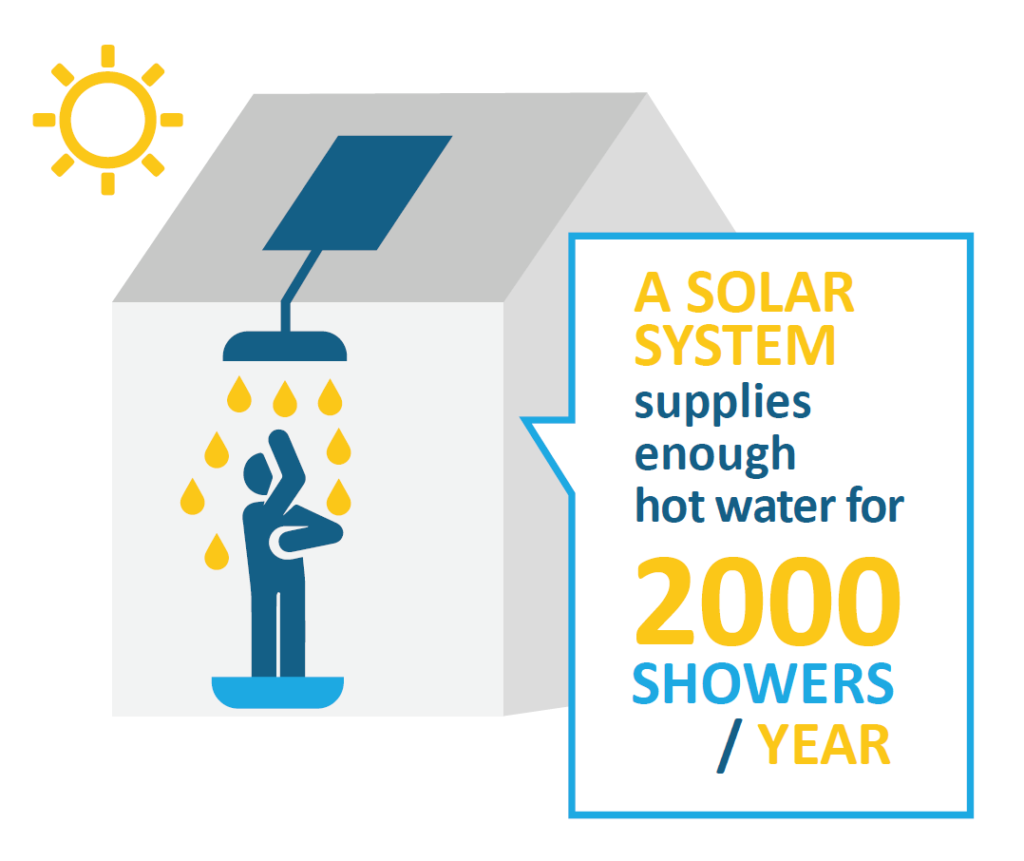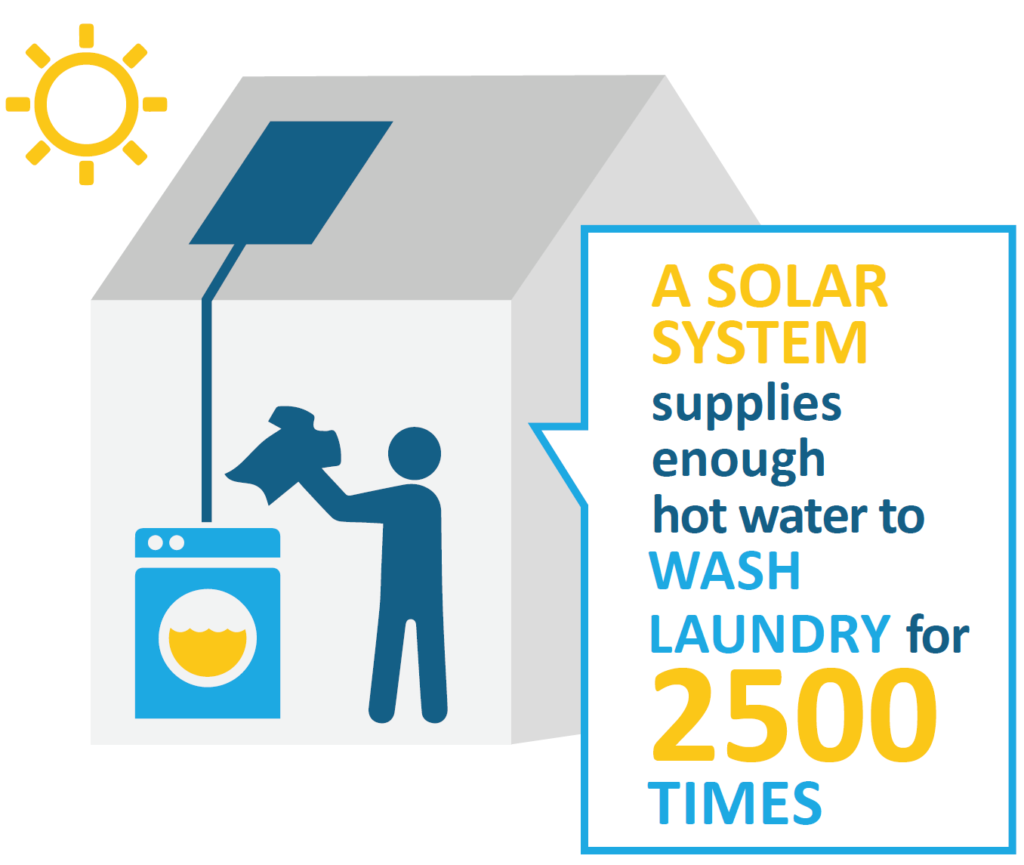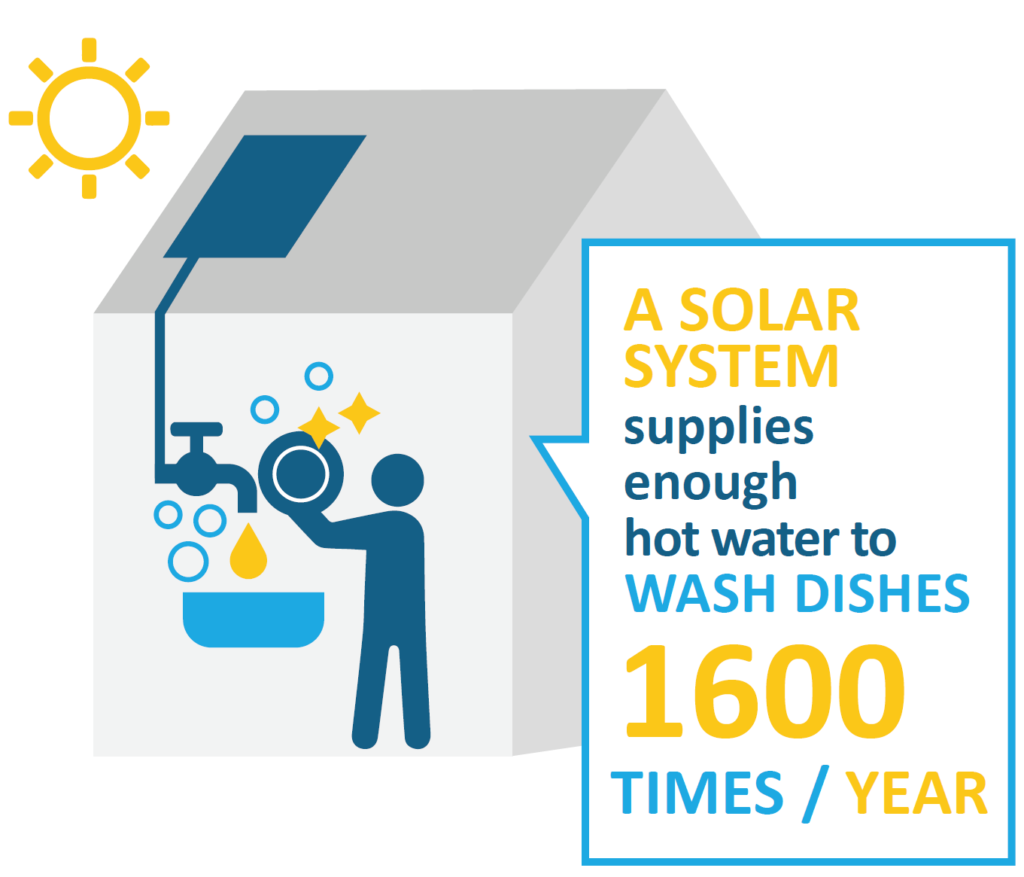Some interesting facts about solar thermal
Emissions saved – ST compared with electric car
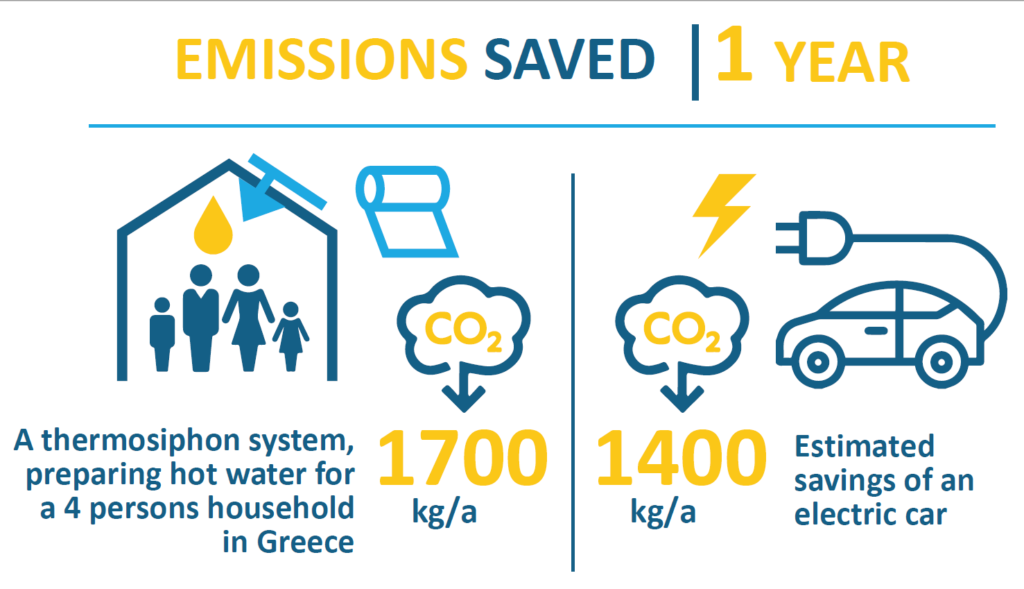
Energy cost – ranges for different solar thermal applications

Performance solar thermal: comparison with Solar PV
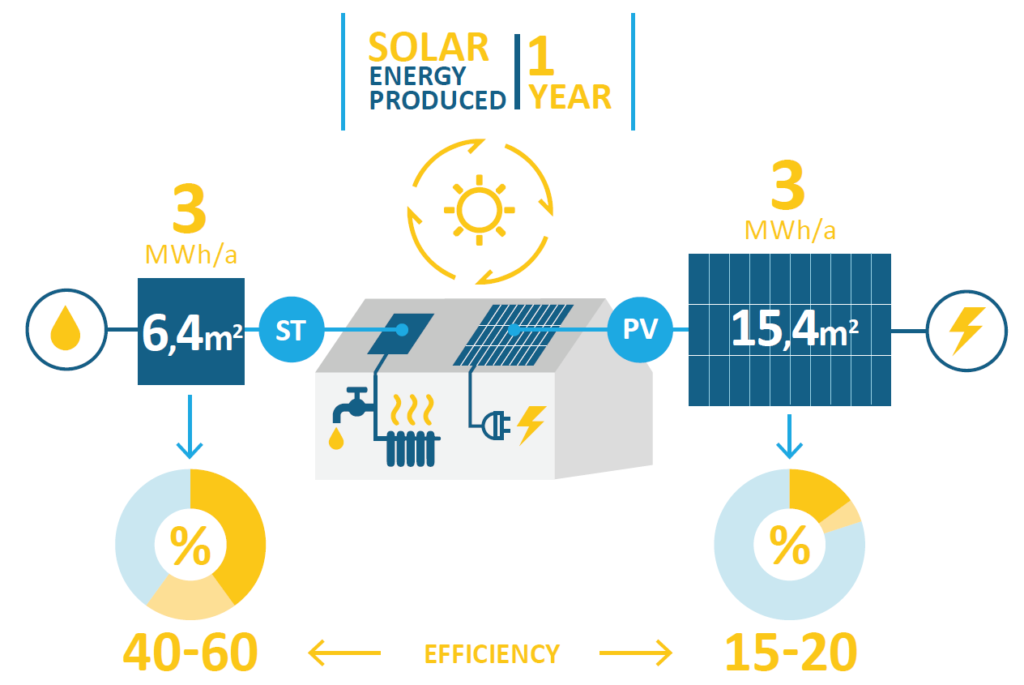
Energy supply – example of normal uses for Domestic Hot Water
Infographics explained
Emissions saved – ST compared with electric car
A typical solar thermal system used in Greece has a collector area of 2,5m2 and a water store around 150 l. The system usually replaces an electric storage water heater. The average collector output is 683 kWh/m2/y . The avoided CO2 emissions correspond to 989 g CO2/kWh. As such, a typical thermosiphon in Greece saves 1688 kg. CO2/y.
The average distance covered by a family car is 12 000 km/year and the average emissions of a new Internal Combustion Engine (ICE) car is about 120gr/km. An electric car, in an optimal scenario where it would be fully supplied with electricity from renewable sources, could save all emissions of an ICE, equivalent to about 1400 kg. CO2/y. It should be noted that, in most cases, the CO2 content of the electricity from the power grid used by the electric car should be deducted from the referred savings by an electric car.
Energy cost – ranges for different solar thermal applications
The graph indicates the range of solar thermal heat costs for different types of solar thermal systems in different European regions, based on the Levelised Cost of Heat (LCOH). In simple terms, the LCOE indicates the average costs per energy unit average costs of per energy unit supplied over the lifetime of the system. This is compared with the range of costs for useful heat from reference sources, which considers the losses by converting natural gas and electricity into heat. A conversion efficiency of 85% for gas and 95% for electricity is assumed. The costs of natural gas and electricity are based on values for domestic consumers in the second half of 2019.
Sources: Solar Heat Europe, Solar Thermal Markets In Europe – Trends And Market Statistics. Data on solar heat systems: IEA-SHC: IEA-SHC task 52 , Classification and Benchmarking; Solar Heat Worldwide 2018, Data on natural gas and electricity: Eurostat.
Performance of solar thermal: comparison with Solar Photovoltaics (PV)
This case provides an example located in central Europe (Würzburg, Bayern, Germany), with a solar irradiation of 1123 kWh/m²/a (GHI).
It uses a PV panel with 300 Wp and an area of 1,65 m² (182 Wp/m²). The efficiency of the PV system is 17% and the output estimated is 195 kWh/m2 /a.
The solar thermal system has a capacity of 700 W/m² and, based on the IEA-SHC conversion factor, the output for the reference location is 471,66 kWh.
Based, on these assumptions, the capacity and area required to provide 3.000 MWh/a are:
| Energy produced/year | Capacity | Area | |
| ST | 3 MWh/a | 4,5 kWth | 6,4 m² |
| PV | 3 MWh /a | 2,8 kWp | 15,4 m² |
Energy supply – example of normal uses for Domestic Hot Water
The reference location is central Europe (Austria). A 6 m2 solar system generates 400 kWh per m2 per year, totaling 2 400 kWh per year.
Showering
A shower, lasting approximately 6 minutes, will consume around 1,2 kWh when the water is heated to 38 °C and uses an average shower head (10 liters of water distributed per minute).
Washing machine
A washing machine cycle consumes an average of approximately 0,96 kWh, mostly for heating the water.
Dishwasher:
A dishwasher cycle consumes averages approximately 1,45 kWh, mostly heating the water.
